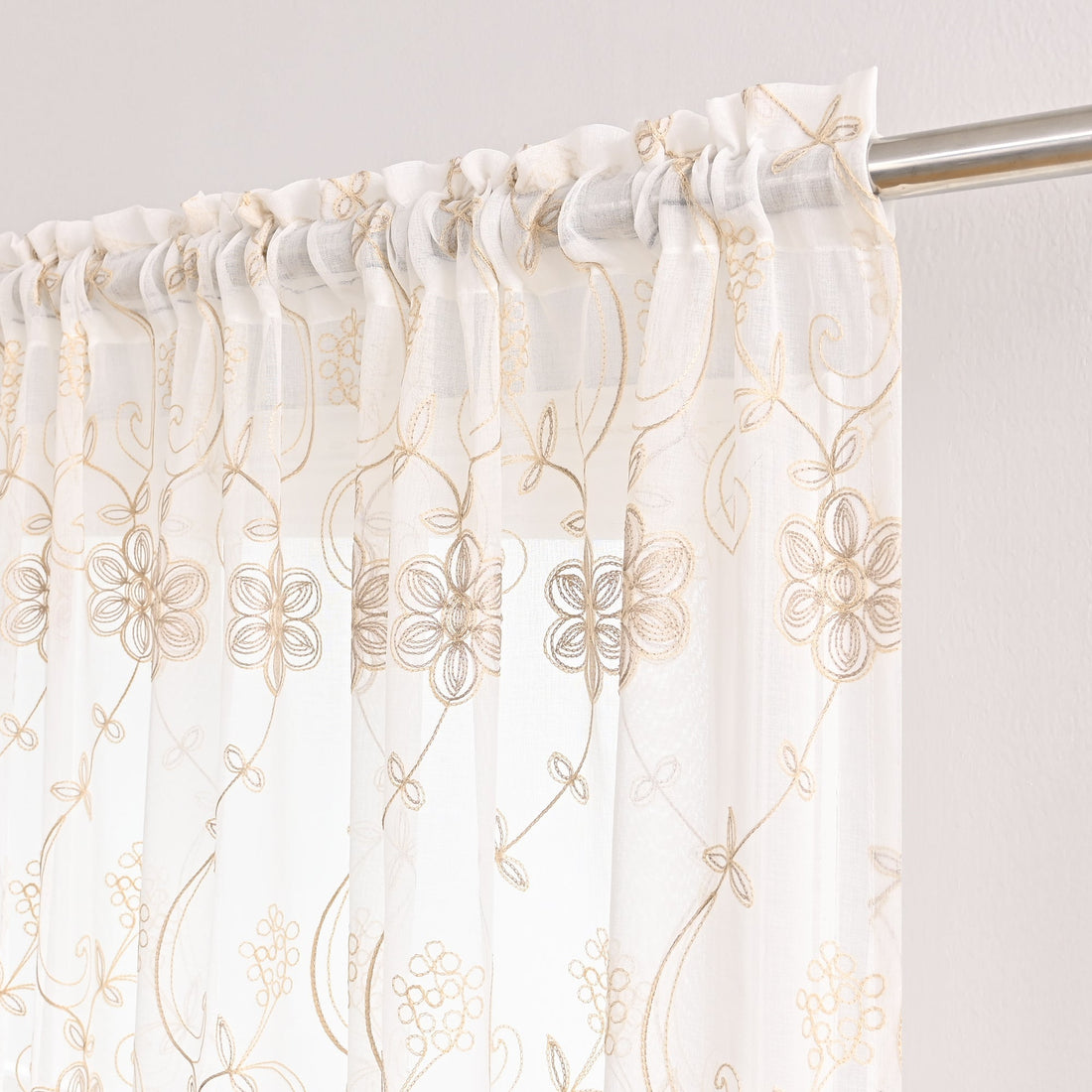
How to Choose Curtains: A Comprehensive Guide
Inside this Article:
Curtains are undoubtedly the highlight of soft furnishings. Choosing the right curtains can elevate the beauty of your entire home, while the wrong choice can downgrade the overall style. You might have nailed the hard decoration part of your home, but don’t let the curtains be the final pitfall! Here’s a detailed guide to help you choose the perfect curtains for your space.
1. Curtain Fabric
The fabric of your curtains plays a crucial role in both functionality and aesthetics. Here are the most common types of curtain fabrics:
1.1 Polyester Fiber
- Features: Known as "polyester," it’s crisp, durable, wrinkle-resistant, and has excellent drape. It’s also non-sticky and doesn’t attract hair.
- Best for: Simple, modern styles.
- Pros: Affordable, easy to maintain, and versatile.
- Cons: Lacks texture and may feel less luxurious.
1.2 Linen
- Features: Pure linen is expensive and less durable, so it’s often blended with polyester for better crispness and light-blocking.
- Best for: Natural, rustic, or modern aesthetics.
- Pros: Eco-friendly, breathable, and elegant.
- Cons: Wrinkles easily and requires careful maintenance.
1.3 Cotton
- Features: Pure cotton is prone to wrinkling and light penetration, so it’s often blended with polyester for better insulation.
- Best for: Casual, cozy spaces.
- Pros: Soft, breathable, and easy to clean.
- Cons: Wrinkles easily and may fade over time.
1.4 Silk
- Features: Luxurious and delicate, silk curtains require blackout lining to protect them from UV rays.
- Best for: Formal, elegant spaces.
- Pros: Smooth, lustrous, and adds sophistication.
- Cons: Expensive, hard to clean, and sensitive to sunlight.
1.5 Velvet/Suede
- Features: Velvet is heavy and luxurious, often blended with polyester. Suede is soft but prone to dust and shrinkage.
- Best for: Cozy, opulent spaces like bedrooms or home theaters.
- Pros: Excellent insulation and light-blocking.
- Cons: Heavy, hard to clean, and expensive.
1.6 Chenille
- Features: A fancy yarn with a soft, velvety surface. Chenille curtains are made of polyester and are popular for their texture.
- Best for: Modern, textured interiors.
- Pros: Soft, thick, and good drape.
- Cons: Prone to dust, shrinkage, and color fading.
1.7 High Precision
- Features: A high-density fabric with a smooth surface, excellent durability, and light-blocking properties.
- Best for: Any room requiring durability and elegance.
- Pros: Strong, fade-resistant, and smooth.
- Cons: Expensive and less breathable.
Tip: Most curtain fabrics are made of polyester blends, so focus on the feel, texture, color, and style rather than the material itself.
2. Gauze/Sheer Curtains
Sheer curtains are lightweight and allow natural light to filter through while maintaining privacy. Here are some popular types:
2.1 Tencel Velvet Yarn
- Features: Light-transmitting but not transparent, soft, and silky.
- Best for: Bedrooms and living rooms.
- Cons: Prone to snagging and pilling.
2.2 Phantom Yarn
- Features: Heavyweight, good drape, and light-transmitting.
- Best for: Bedrooms and living rooms.
- Cons: Less privacy and lacks a hazy effect.
2.3 Embroidered Mesh Yarn
- Features: Decorative, breathable, and light-transmitting.
- Best for: Bedrooms and living rooms.
- Cons: Poor privacy and prone to snagging.
2.4 Japanese Yarn
- Features: Checkered texture, light-transmitting, and natural drape.
- Best for: Bedrooms and living rooms.
- Cons: Lacks elegance.
2.5 Dream Curtain
- Features: Adjustable, UV-resistant, and flame-retardant.
- Best for: Living rooms.
- Cons: Expensive.
2.6 Vertical Blinds
- Features: Light-transmitting with a mottled effect.
- Best for: Bedrooms and living rooms.
- Cons: Splicing marks may appear on wider blinds.
2.7 Chiffon
- Features: Light, delicate, and semi-transparent.
- Best for: Living rooms and dining rooms.
- Cons: Poor privacy.
2.8 Diamond Yarn
- Features: Durable, anti-snagging, and semi-transparent.
- Best for: Any room.
- Cons: Lacks full privacy.
3. Blackout Curtains
Blackout curtains are ideal for rooms requiring complete darkness or insulation.
3.1 Silver-Coated Material
- Features: Affordable and effective at blocking light.
- Best for: Hotels or temporary use.
- Cons: Prone to aging and hard to clean.
3.2 Black Silk Interlayer
- Features: Thick, UV-resistant, and breathable.
- Best for: Bedrooms and living rooms.
- Cons: Less effective than silver-coated materials.
3.3 High Precision
- Features: Dense weave for excellent light-blocking.
- Best for: Any room.
- Cons: Expensive.
4. Curtain Rod
The right curtain rod ensures smooth functionality and complements your decor.
4.1 Roman Rod
- Features: Decorative and easy to install.
- Best for: Thin curtains and low-ceiling rooms.
- Cons: Not suitable for heavy fabrics and may leak light.
4.2 Track Rod
- Features: Smooth, bendable, and ideal for heavy curtains.
- Best for: High-ceiling rooms.
- Cons: Hard to disassemble and clean.
5. Curtain Box
A curtain box hides the rod or track, preventing light leakage and enhancing aesthetics.
5.1 With Ceiling
- Solution: Leave a groove by the window during ceiling installation.
5.2 Without Ceiling
- Solution: Use gypsum boards to create a baffle for the rod or track.
Final Tips for Choosing Curtains
- Consider the Room’s Function: Choose blackout curtains for bedrooms and sheer curtains for living rooms.
- Match Your Decor: Select fabrics and colors that complement your interior style.
- Prioritize Maintenance: Opt for easy-to-clean fabrics if you have a busy lifestyle.
- Test Before Buying: Feel the fabric and check its drape to ensure it meets your expectations.
By following this guide, you can choose curtains that not only enhance the beauty of your home but also provide the functionality you need. Happy decorating!
What’s your favorite curtain style? Share your thoughts in the comments below!